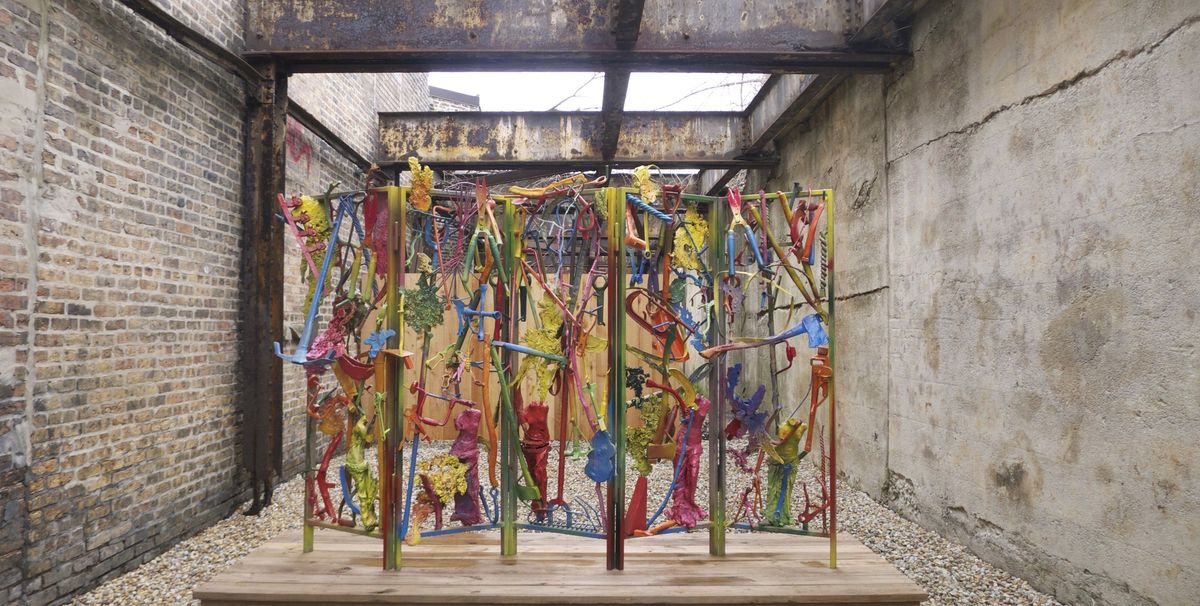The Richard Gray Gallery, founded by the veteran dealer in Chicago in 1963, has expanded to a 5,000 sq. ft warehouse space in an industrial corridor a few miles west of the city’s downtown. The inaugural show is dedicated to new work by the artist Jim Dine, while a concurrent exhibition of his painting and drawings from the 1960s opens in the gallery’s New York outpost this week (both until 10 June).
When the Chicago gallery started to grow its contemporary art programme, the partners Valerie Carberry and Paul Gray knew they wanted to find a new space outside their long-time home on the 38th floor of the Hancock Building, where the gallery will continue to keep administrative offices. “The first time we toured the space in its rawest form we could see all of the potential and beauty right away,” Carberry says.
The Gray Warehouse at 2044 West Carroll Avenue has no columns to interrupt visitors’ views, the wood truss ceiling is nearly 20 feet high, and a row of skylights bisects the ceiling above. “We felt that with that kind of space [our options are] limitless, we can show work of any scale without worrying about a freight elevator,” said Carberry. The building also has a small outdoor patio in the back that is bordered by an elevated rail road track, where outdoor work can be installed.
The neighbourhood was also a draw as a growing location for cultural organisations, including the Museum of Contemporary Art’s events space, the Spudnik Press Cooperative’s print-making studio, and Lookinglass Theater’s scene-building shop.
The Gray Warehouse was designed Wheeler Kearns Architects, the local firm that is also transforming an abandoned Kraft cheese plant into a contemporary art space for the Crystal Bridges Museum of Art in Arkansas. For the Chicago arts space, Wheeler Kearns restored symmetry to the brick façade with glass entryways flanking an enormous roll-up glass door. With the interior, the goal was to do as little as possible. “Whenever you are working with a space that is about the art, you want the architecture to be kind of silent,” said Joy Meek, a member of the architectural team. The wood ceiling was sandblasted, new floors of polished concrete were installed, and functional spaces like a reception room and storage were added.
A few of the panes of glass in the clerestory windows of the double-pitched roof above were tagged with a burst of yellow bubble script and bits of blue and red paint that glow like stained glass when the sunlight pours in. The graffiti will stay for now thanks to Jim Dine. The artist encouraged Gray and Carberry to leave the windows alone. “Jim liked it,” said Carberry. “It’s the city.”
• Jim Dine: Looking at the Present, Gray Warehouse, 2044 West Carroll Avenue, Chicago; Primary Objects: Jim Dine in the 1960s, Richard Gray Gallery New York, 1018 Madison Avenue, Fourth Floor.


